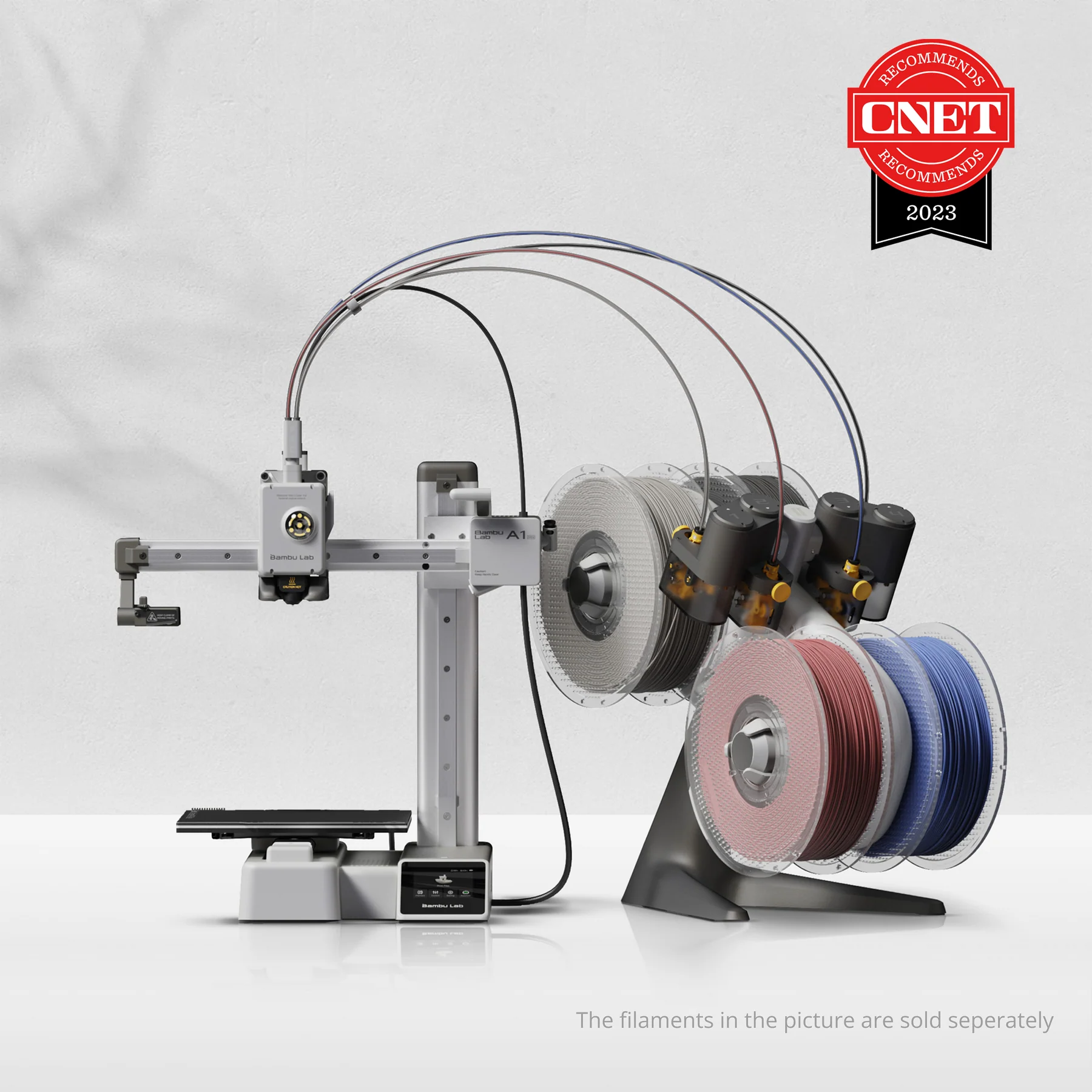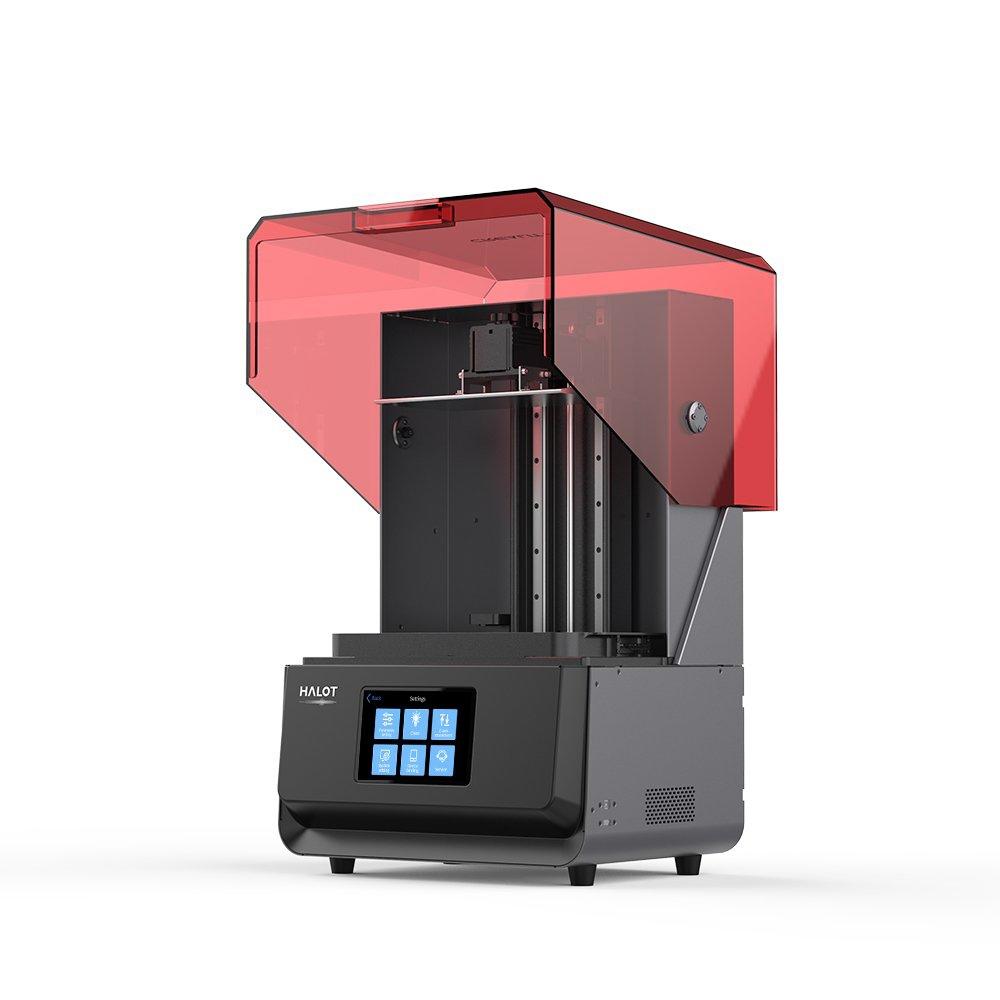Compare A1 Mini vs Halot Max
Comparison between the best 3D printers
Choose the best 3D printer at the best price. The cheapest 3D printers are here.
Buy a 3D printer here with 3D Fila.
 |
 |
|
| Model | A1 Mini |
Halot Max[BUY Halot Max] |
| Printing Material | Filament | Resin |
| Buy Filament for Bambu Lab A1 Mini | Buy Resin forCreality 3D Halot Max | |
| Estimated price | $549,00 | $3000,00 |
| Manufacturer | Bambu Lab | Creality 3D |
| Release Year | 2023 | 2021 |
| Print Volume [mm] | 180x180x180 | 293x165x300 |
| Printer Size [mm] | 315x347x365 | 480x387x770 |
| Weight [kg] | 5,5 | 32,5 |
| Power Loss Recovery | YES | NO |
| Maximum Resolution [mm] | 0,1 | 0,03 |
| Processor | 32-bit Silenciosa | |
| Display | Touchscreen 2,4'' | Display touchscreen 5'' |
| Power Supply | 150 W | |
| Connectivity | Wifi, Bambu bus, Cartão SD | SD / USB / Wi-Fi |
| Operating systems | Windows, Linux, Macbook | Windows, Mac, Linux |
| Date of registration in the system | 2024-04-10 | 2022-11-04 |
| Release date | 2023 | 2021 |
| Extra features | The Bambu Lab A1 Mini stands out not only for its impressive speed and automatic calibration, but also for its multi-color printing capability thanks to AMS Lite. This innovative system makes multi-color printing easy, making it accessible to everyone. AMS Lite, specific to the A1 Mini, supports up to four different materials simultaneously, providing creative freedom without complications. With comprehensive sensors for energy monitoring and recovery, a camera for timelapses and Wi-Fi control, the A1 Mini and AMS Lite together offer an intuitive and advanced 3D printing experience, ideal for materials such as PLA, PETG and TPU, and designed for simplicity and fast maintenance with quick-change nozzles. | The Halot Max printer stands out for its large print size (293 x 165 x 300 mm) and uses SLA technology. It has an integral light source for improved accuracy and a strong core with an advanced operating system. Its Z-axis module ensures high precision, supported by efficient slicing software. The machine offers online OTA updates and boasts an adjustable layer thickness between 10 and 200 microns. Its XY-axis resolution is 3840*2160, with 0.05 mm accuracy, and an integral 405nm light source. The printer includes a 5" touchscreen and multiple connectivity options, such as USB, Creality Cloud, and HALOT BOX WiFi. With cutting-edge technology, the Halot Max is ideal for printing small models with uniform precision, thanks to its self-developed lighting system and stable printing mechanism, which includes dual linear guides, ball screws, and an intelligent brake system. |
| Support for multiple colors and materials (AMS and CFS) | YES | NO |
Notes * |
||
| Cost-benefit | 7 / 10 | 5 / 10 |
| Hardware | 4.2 / 10 | 1 / 10 |
| Tela | . | . |
| Print volume | 3 / 10 | 3 / 10 |
| Performance | 4 / 10 | 9 / 10 |
| [BUY Halot Max] |
Conclusion |
| In comparing the Bambu Lab A1 Mini and the Creality 3D Halot Max, distinct advantages and drawbacks emerge, catering to different user needs and preferences in the 3D printing space. The Bambu Lab A1 Mini, priced significantly lower, shines with its cutting-edge features designed for ease of use and versatility. Its support for multi-color printing through the AMS Lite system allows users to experiment creatively with up to four different materials simultaneously. The printer's automatic calibration, impressive speed, and robust connectivity options further enhance its appeal, making it an excellent choice for hobbyists and those new to 3D printing. However, the print volume is relatively smaller, which might limit the size of projects. On the other hand, the Halot Max boasts a larger print volume and superior resolution due to its SLA technology, offering unmatched precision and detail, especially for intricate models. Its strong build and advanced self-developed lighting system cater well to users who prioritize detail, making it ideal for professionals and serious makers. However, the higher price point and lack of multi-material support may deter those seeking a more economical or versatile option. Ultimately, the choice between these two printers boils down to user requirements. The Bambu Lab A1 Mini represents a solid balance of features, affordability, and user-friendly operation, ideal for casual and beginner 3D printing enthusiasts. In contrast, the Halot Max appeals to those who require high precision and larger print capabilities, albeit at a substantially higher cost. Depending on your budget and specific printing needs, either printer could serve you well, but the A1 Mini stands out for those prioritizing value and versatility in their 3D printing journey. |

